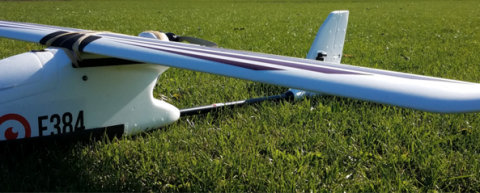Innovation
The solutions explored by this OFRN project are to replace the passive on-board uni-functional structural components on a typical craft with multifunctional components having the same weight and dimensions, but with additional capability to in-situ store electrochemical energy. In this way, multifunctional "building blocks” can be developed that can potentially enable extended flight times and/or increased payload.
Objective
The multifunctional structure-integrated battery has the potential to significantly impact Ohio’s economy related to more-electric aero-crafts with strategic applications to space, defense and civilian platforms. The project synergistically aligns with several key AFRL and NASA technical programs, including AFRL programs on small and micro UAVs, manned aircrafts, autonomous sensor networks, next-generation surveillance systems, and battlefield airmen-worn systems, and NASA’s cross-cutting programs on light-weighting and reduced power for development of more-electric air-vehicles as well as for pace exploration.
Key Ohio industry that can potentially benefit from this technology include Theiss UAV Solutions, Event 38 Unmanned Systems, NEOx, GE Aviation, Workhorse, Safran Electric Power Systems, to name a few. We are actively pursuing future commercialization opportunities of this technology via SBIR/STTR funding from NASA, AFRL, DOE, and other federal agencies.
Background
High energy-density and safe electrochemical energy storage systems are an identified priority for defense, transportation and aerospace needs of AFRL and NASA. At the same time, weight/volume and also the load-bearing characteristics of state-of-the-art commercial energy storage devices are a constant challenge. As a result, battery packs with property attributes that seek to combine high specific energy/power with good structural performance are difficult to achieve simultaneously, limiting both aircraft and war fighter performance in demanding military and space applications.
Commercial Goal
The commercialization team of the OFRN, in partnership with the project team, and guided by the Federal Sponsors at AFRL and NASA, identified the federal and commercial UAV market as an initial target for structural energy storage components. Accordingly, the team selected Event 38 Unmanned Systems, Akron, OH, as the key commercialization partner. Event 38’s all-electric Group-1 sUAS, E400, was selected as the platform for structural battery technology demonstration at the Springfield Civil Airport, Springfield, OH, in February 2019. The prototype structural-battery design featured commercial battery cells embedded within the wings of the Event 38 E400 and demonstrated a 1.6X increase in flight endurance when compared with the conventional battery powered craft.
To-date, the economic impact of the project to the State of Ohio has been modest but is expected to grow as the technology matures and is licensed to potential manufacturers representing defense, transportation, agriculture, entertainment, and/or public safety industries. Multiple market points for technology insertion have been identified on the project. Moreover, two personnel, one each at post-doctoral and MS levels, in engineering at Case Western Reserve University were supported by the project. The project helped to retain two engineering personnel at Event 38 and one at the CSA Group, Independence, OH, at the engineering technician level. A total of $1.3M leveraged funding was attracted to Case Western Reserve University on research topics related to the project.
Some of key takeaways from the project are;
- Structure-integrated battery is a winning concept to power next generation more-electric vehicles.
- Strategic collaborations between academia, federal labs and industry on complex engineering problems can potentially lead to winning solutions that can enhance system level performance and at the same time have clear commercialization potential.




